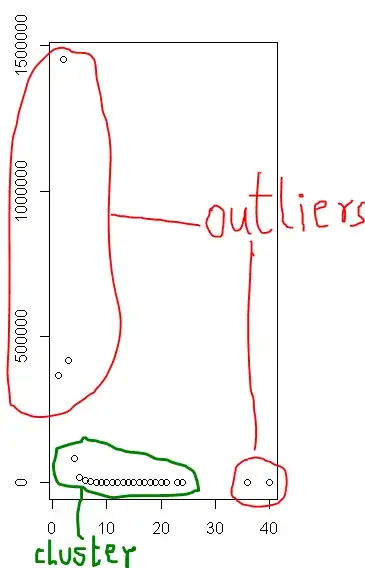I have a frequency table (2 columns) of 20 rows of various transaction amounts. Some of these amounts are fraudulent in nature and are pretty obvious as they appear to be outliers in the scatter plot. I also want to break the data into clusters.
- Is there a limit on the minimum data set required for clustering?
- Can I use any specific technique?
- What techniques can I use to identify the outliers?
